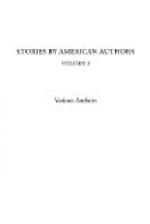It was evident that the Spanish commander had no idea of attempting to land his forces, but simply proposed to keep up a slow, persistent bombardment. It was further apparent that only his lighter artillery was directed upon the shore batteries, and that he was practising with his heavy metal at high elevations, to find out how much range he could get.
When the second day of the bombardment opened, there were about a hundred thousand people still in New York, including two of the city regiments doing police duty. A strong force for this purpose was necessary, as a large number of roughs and criminals, who had hurried away during the first panic, now returned, and signalized their advent by the attempted pillage of the Vanderbilt residences.
About a hundred and fifty of this mob remained on the pavement of Fifth Avenue, after a well-directed mitrailleuse fire had been kept up for some fifteen minutes by the troops. The rest took to their heels, and lurked about the lower part of the city, waiting for a better opportunity, and thinking hungrily of the contents of the magnificent dwellings in the up-town districts.
The sea-coast batteries nearest to the attacking ships were soon rendered untenable by their fire. The large hotels on Coney Island were all struck by shells and burned, and the villages of Flatlands, Gravesend, and New Utrecht were quickly destroyed.
Shell after shell then fell in Flatbush, and occasionally a terrific explosion in Prospect Park, in Greenwood Cemetery, and in the outlying avenues of Brooklyn, showed that the enemy was throwing his missiles over distances constantly augmenting.
On the morning of the third day a futile attempt was made to blow up the “Numancia,” first by the Lay and then by the Ericsson submarine torpedo-boats. The Lay boat, however, ran up on the east bank and could not be got off, and the Ericsson started finely from the shore, but, apparently, sank before she had gone a mile.
The attack by the “Alarm” and her attendant fleet of torpedo-tugs had the effect of stopping the bombardment and of concentrating the enemy’s attention upon his own safety. The tugs advanced gallantly to the onset, six of them rushing almost simultaneously upon the “Vittoria.” That vessel met them with a broadside which sank four at once, and the other two were riddled by shell from Hotchkiss revolving cannon from the decks of the Spaniard; their machinery was crippled, and they drifted helplessly out to sea. Of the others, some ran aground on the bank, some were sunk, and not one succeeded in exploding her torpedo near a Spanish vessel. The “Alarm” planted a shell from her bow-rifle, at close range, squarely into the stern of the “Zaragoza,” piercing the armor and killing a dozen men, besides disabling two guns. She was rammed, however, by the “Arapiles,” and so badly injured as to compel her to make her escape into shoal water to prevent sinking. There she grounded, and the Spaniards leisurely made a target of her, although they considerately permitted her crew to go ashore in their boats without firing a shot at them.




